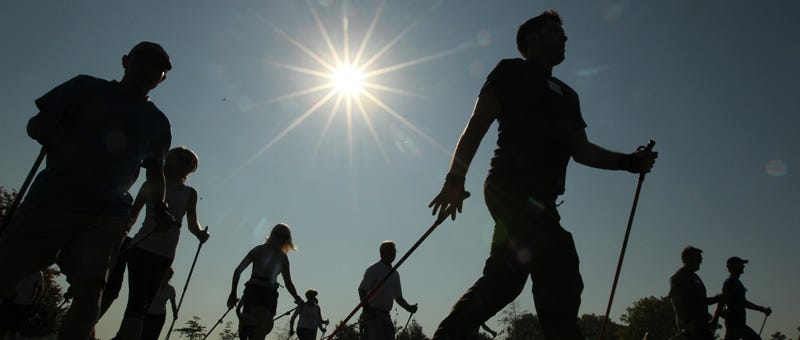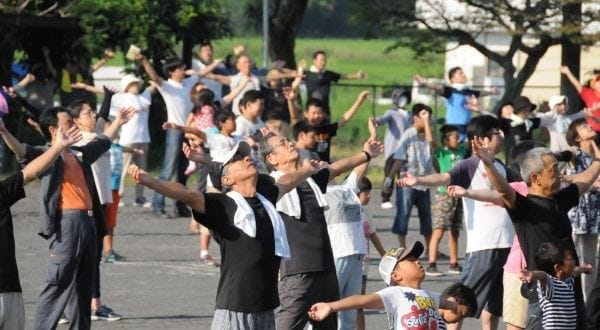America’s Lonely and Unhealthy Obsession With Exercise
Why American’s Have Fitness Wrong and What We Can Learn From Other Countries
“But are not exercise and the open air within the reach of us all?” — Walt Whitman
If you look up the word fitness, you’ll usually find two definitions. The first relates to physical health—how strong and healthy you are, or your ability to perform everyday activities with ease, regardless of age. The second, rooted in Darwinian biology, defines fitness as reproductive success—the ability of an organism to survive in challenging environments and pass on its genes.
Whether you’re human or another animal species, both definitions point to the same concept: survival of the fittest. Interestingly, neither definition mentions having “abs of steel” or a “beach body.” Yet, American fitness culture often centers on aesthetic transformation—losing weight, getting a six-pack, and chasing a certain look. This obsession with appearance can lead to body dissatisfaction, guilt, and shame when people struggle to meet these unrealistic standards.
Despite this, the American fitness industry is a multi-billion-dollar business—while the nation remains remarkably unfit. According to the CDC, 73% of U.S. adults are overweight. The Health Policy Institute at Georgetown University reports that 65 million Americans have experienced recent back pain. Even more concerning: we have shorter lifespans and experience a lower quality of life as we age compared to other developed countries.
So, if millions are spending money on gym memberships, Boot Camp and Spin classes, pricey exercise equipment and running shoes, why are we, as a nation, still overweight, suffering from chronic pain, and dying younger from chronic diseases?
One major reason for this disconnect is the way the fitness industry prioritizes profit over health. The “pay-to-get-fit” model is deeply embedded in American culture. As Dr. Natalia Petrzela, author of Fit Nation: The Gains and Pains of America’s Exercise Obsession, notes:
“There are endless gyms, classes, and products that promise to make you fitter — as long as you hand over your credit card.”
We busy, stressed-out Americans are easy targets for savvy marketing that knows exactly how to tap into our craving for comfort and quick fixes. It’s far more convenient to buy supplements, diet plans, or the latest fads in fitness than to commit to the effort, consistency, and patience required for real lifestyle change.
We’ve been sold the idea that these products will “fix” us — that health and exercise are things we can put on a credit card. But true fitness doesn’t come from a purchase or from squeezing in a solitary hour of exercise during an otherwise sedentary day. It comes from mixing movement into our daily lives in ways that feel good and connect us with others — like walking or biking to work, or on errands, or joining group fitness classes and participating in recreational activities with friends, especially outdoors.
In many other countries, this is the norm. Fitness isn’t something to consume — it’s simply a way of life.
How Other Countries Practice Fitness
Many countries are healthier — and often happier — than the United States because movement is naturally woven into daily life. In these cultures, physical activity isn’t treated as a chore that you do alone or something you have to schedule at the gym. Instead, it’s simply a way to live: a means of getting around, building community, or connecting with others — often outdoors, regardless of the weather.
Take Finland, for example. The Finnish are known for their hardy, resilient mindset and embrace the idea that there’s “no bad weather, only bad clothes.” One of their most common forms of movement is Nordic walking, which uses specialized poles and serves as both transportation and recreation. Even in freezing temperatures and during the dark winter months, people continue this practice — not to burn calories, but to stay connected to nature and each other.
Japan offers another inspiring example. For decades, people of all ages gather in parks, office buildings, and schoolyards across the country to perform radio-taiso, a short group exercise routine. This three-minute, 13-move calisthenics session is accompanied by music and broadcast regularly on YouTube and national radio. It’s a communal, low-pressure way to get moving — and it shows how even just a few minutes of moderate daily movement can lead to better long-term health.
Interestingly, radio-taiso originated in the U.S. in the 1920s as a public health initiative — but it didn’t catch on. In Japan, however, it became a beloved tradition and is often cited as one reason for the country’s impressive life expectancy. It has since spread to other countries like Brazil, Peru, and the UK, where it’s being used to promote physical activity and social interaction, especially among older adults.
In contrast, the way Americans talk about exercise often revolves around the latest fitness trends and quick fixes for weight loss or achieving a certain look. This appearance-driven, individualistic mindset is not only unsustainable—it’s also disheartening. It traps people in a cycle of failed attempts and frustration. That’s why so many end up in gyms, mindlessly walking on treadmills, staring at screens, feeling uninspired and disconnected. No wonder New Year’s resolutions rarely stick, yet people remain locked into costly gym memberships.
If Charles Darwin were around today, he might be genuinely alarmed by the long-term survival prospects of our species. The consequences of our sedentary, unhealthy lifestyles are already showing — with more children being diagnosed with type 2 diabetes, a condition once seen only in adults. It’s no coincidence that the U.S. now lags behind many developed nations in life expectancy.
If we truly care about the health of our children and our nation, it’s time to rethink how we approach fitness. Many other countries offer a powerful model: fitness isn’t something to buy or squeeze into a busy schedule—it’s a joyful, daily habit that connects people and supports lasting well-being.
The best part? This kind of fitness doesn’t require fancy equipment or expensive gym memberships. It’s simple, accessible, and often free. All it takes is a willingness to show up, move your body, and connect with others in a shared, uplifting experience.







The savy marketing is part of the issue but I blame the built environment. Swapping out my car for a bike has been one of the best things for my mental and physical health.
Sadly this isn't possible in much of the U.S. - but even just short bursts of movement throughout the day is so much better than one long 60-minute exercise session which is what I think most people default to.